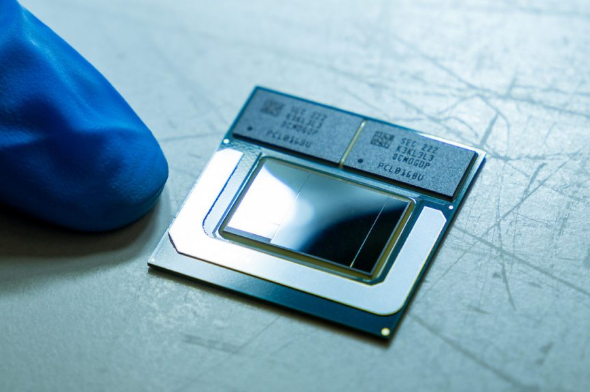Connection to DriversCloud Create a DriversCloud.com account Reset your DriversCloud.com password Account migration
Intel presents its Arrow Lake/Lunar Lake chips at CES: scheduled for release this year
Intel's relaunched company is making promises that it had better keep in 2024: consumers are waiting for the company to deliver.
For years now, we've been talking about Intel's backwardness, about how the American company is no longer up to speed with Samsung and even TSMC when it comes to etching technology, so Intel was keen to take advantage of CES 2024 to set the record straight. At Las Vegas, Intel first disappointed a little by presenting the continuation of its Raptor Lake Refresh generation. Actually, disappointing is a strong word, but it has to be admitted that Raptor Lake Refresh is mainly there to plug a hole in Intel's calendar. It's no more and no less than a breathless architecture (Alder Lake) pushed as far as it can go until something better comes along.
And better is on the way. On laptops, first of all, with the Meteor Lake generation, which was presented last December and should benefit from the whole of 2024 to be deployed more massively. This improvement should then reach desktop machines with the next architecture, Arrow Lake. This should take all the improvements proposed by Meteor Lake and integrate them into the world of "classic" PCs. Michelle Johnston Holthaus, head of Intel's client computing division, hosted a presentation organized by Intel at CES in Las Vegas, with the Arrow Lake generation as the main attraction.
She began by confirming what rumors have been saying for several weeks now: Intel is almost ready, and the company is " in the final stages " of designing Arrow Lake, but also Lunar Lake, the generation that will follow. Arrow Lake is a dual generation, because as Michelle Johnston Holthaus explained, several series are planned: the Arrow Lake-S on socket 1851 for our desktops, and the Arrow Lake-H/HX/U series for our notebooks. In both cases, we'll be taking advantage of the new Lion Cove cores and the processor "tile" design brought together on a single chip using the Foveros 3D technique, the advantage being to enable the combination of various technologies within a single processor.
There's a CPU tile for the heaviest calculations, and an SoC tile for the processor's vital functions. An I/O tile handles exchanges with the rest of the machine, while a fourth tile, the Graphics Tile, takes care of the display. Here, Intel promises great things with a graphics controller derived from its ARC Alchemist technology. That said, for fans of integrated graphics, it's the next generation, Lunar Lake, that should usher in a real revolution. Also scheduled for 2024, but exclusively for notebooks and probably a few months after Arrow Lake, this generation will integrate a graphics solution based on ARC Battlemage architecture, which promises to be far superior to ARC Alchemist. Will you soon no longer need a graphics card to play laptop games in good conditions? We can dream...







